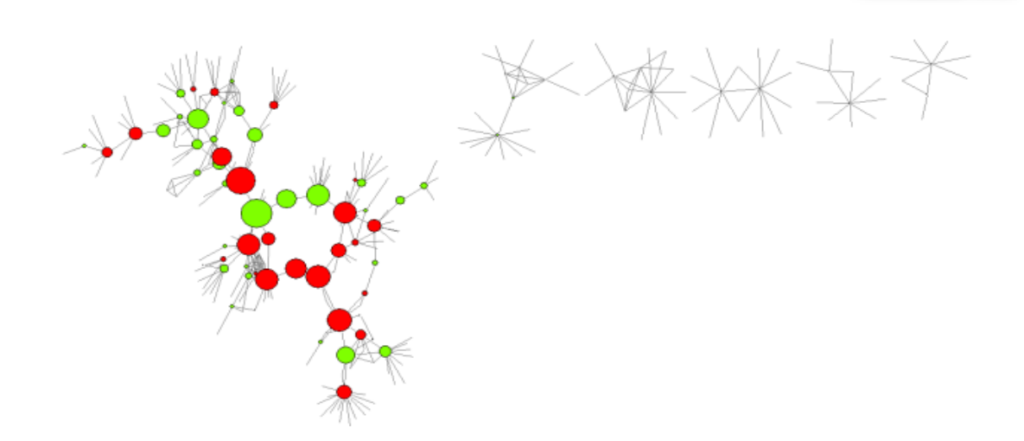As one of the most violent cities in the USA, Kansas City realized that it needed to take a different approach to solving it’s crime problem. So, under new government, the Kansas City No Violence Alliance (aka KC NoVA) was created. KC NoVA decided to approach the problem from a network perspective and made the following assumptions:
- People with friends who have committed crimes, are more likely to commit crimes
- The closer you are to violence, the more likely you are to be a victim of it
- Violence is concentrated among groups of people
The first and third assumptions in particular highlight Granovetter’s model of networks, with violent crime primarily occurring in these highly connected clusters of people.
Using these assumptions, their first order of business was to graph the relationships between the gang members.

The connections between people are determined based off of a multitude of different metrics such as traffic stops, arrests, informants information, street intelligence, and more. Using real world information in combination with analysis of the graph, they were able to determine the key players in the gang.

Taking into account whether the individual was on probation or parole, and their betweenness on the graph, police selected two people from each group to reach out to. They warned the individual about violence, and offered targeted support for education, employment, anger management, etc. This method allowed the city to efficiently allocate it’s limited law enforcement resources, and was successful, leading to the number of homicides dropping by more than a quarter next year.
What stood out to me about this article was the proactive approach to crime reduction. Rather than simply reacting to crime, the city was getting out in front of it, not only saving the lives of the would be victims, but also that of the perpetrator. It is truly a win-win scenario and highlights the practical implications of some of the more nebulous concepts of graph theory.
